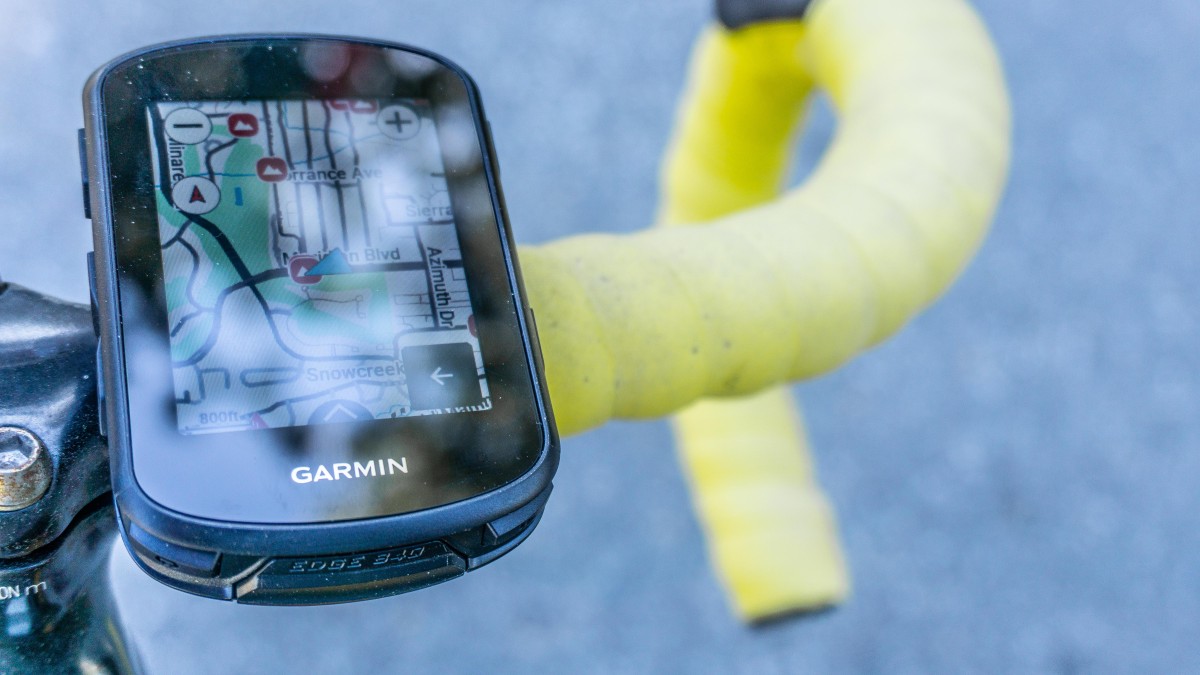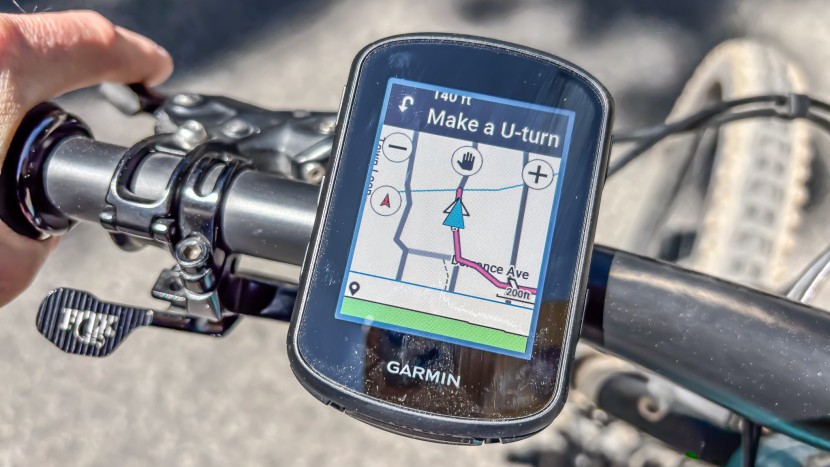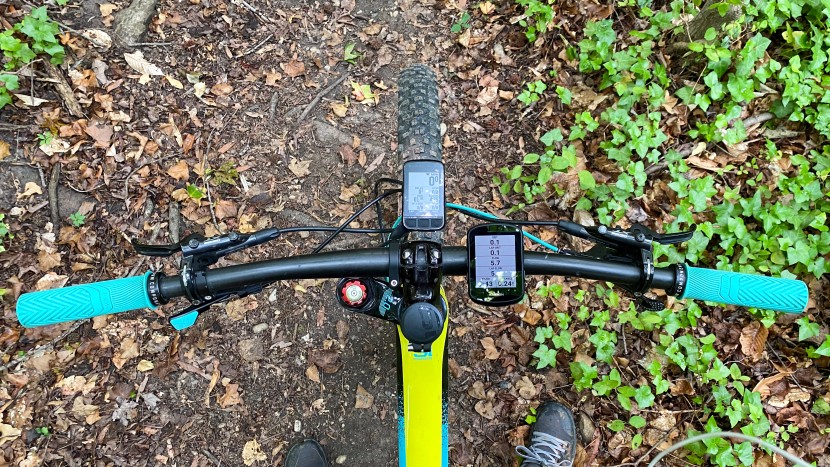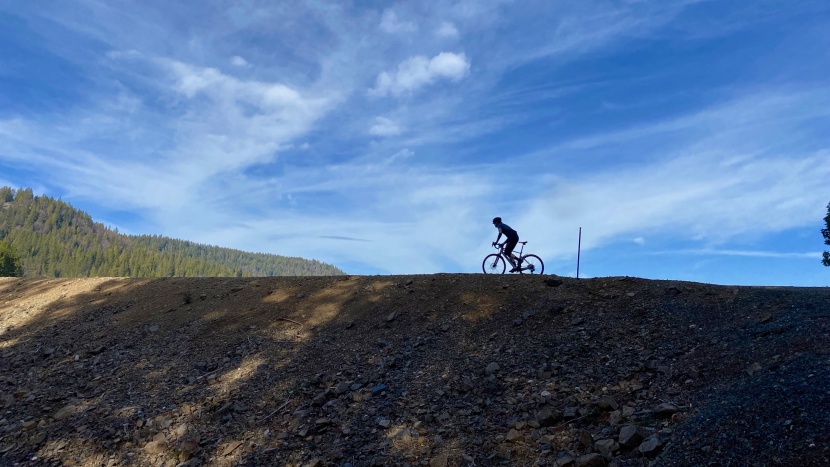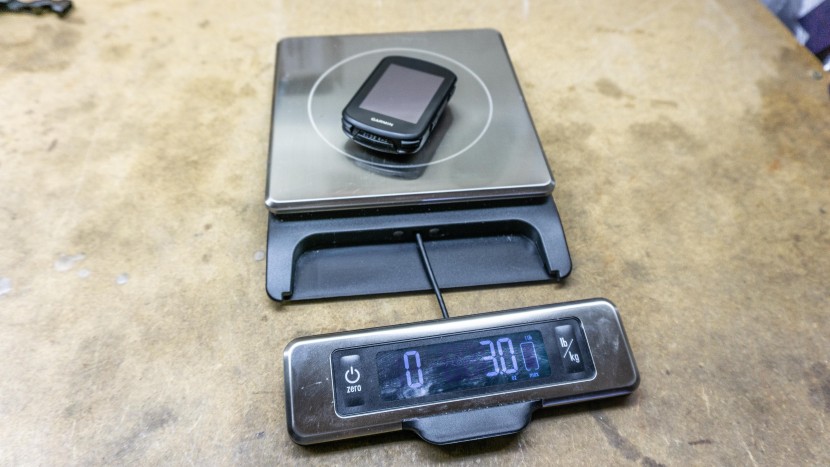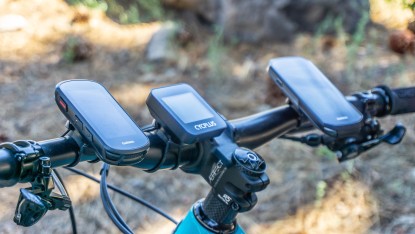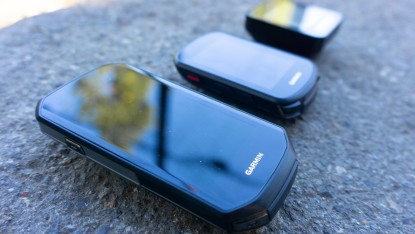
Our Verdict
Our Analysis and Test Results
The Edge 840 was a joy to test; our review team pedaled with the device for weeks and enjoyed every bit. This model particularly stood out as a versatile do-it-all option, with a dizzying number of features in a relatively small package. As one member of the team concluded, “This is an all-arounder champion in my book, the perfect blend of a small profile and high performance.”
Ease of Use
Once you get the Garmin Edge 840 set up how you like it, it works incredibly well. The interface is intuitive and clean, and the device gets straight to the point after booting up. It displays recently synced routes, the current weather (when connected to your phone), recent workouts, Garmin's suggested workout, and even sunrise/sunset times if you have that feature turned on. From powering on to starting a workout, only 25 seconds and one button push are required.
Garmin has made significant improvements to the 840 by adding physical buttons alongside the touchscreen, and has also made the software more reliable. Older Edge models were often buggy, with lost rides and syncing issues requiring frequent reboots. After months of testing, the new Edge 840 proved to be far more dependable. The physical buttons make the device easy to use in the rain; you could even lock the touchscreen while maintaining full functionality. The most substantial setback with the 840 in this metric was the smaller screen size.
Ease of Setup
This is an area where the Garmin Edge 840 can be slightly overwhelming to people who aren't used to using bike computers. If you're upgrading from an older Garmin device, like the Edge 520 or 830, setup is a breeze, as the Edge 840 syncs ride profiles with your previous device to get you up and running quickly. If you're coming from a different computer brand or no computer at all, the setup is a bit more challenging. Having said that, this is a relatively friendly model to unbox, charge, and connect to your handlebars, and other features can be discovered with time.
The first thing that happens when you power on the Edge 840 is that it automatically detects nearby sensors, connects to them, and creates default data screens based on what's available. While convenient, these default screens often require significant customization to be truly useful. Although customizing the screen on the device or your phone is straightforward, the sheer number of options can overwhelm users who aren't tech-savvy. The second step in the process is setting up your Garmin account and profile in the Garmin Connect app. For existing Garmin users, setup is seamless; even for newcomers, it's pretty smooth. One tester's partner, who isn't a tech enthusiast or experienced cyclist, managed to create an account and connect the Edge 840 to their phone in under five minutes.
Features
The Edge 840 stands out as a top-tier bike computer, offering a feature set that's among the best on the market. Its capabilities extend far beyond typical needs, providing more options and tools than many riders will ever want on a daily basis. Throughout testing, some features proved unexpectedly helpful while others felt less essential. Overall, the device's comprehensive functionality is likely to impress and satisfy any cyclist, even if it is a bit overkill at times.
Like any quality bike computer, the Edge 840 tracks essential ride metrics such as speed, heart rate, distance, time, cadence, and power when paired with the right sensors. It goes beyond the basics by offering excellent navigation and mapping capabilities, allowing you to import routes from Garmin Connect, Ride with GPS, Strava, or Komoot, or even modify routes directly on the device while riding. Our mountain bikers also loved that Trailforks lines are integrated into this device.
The ClimbPro ascent planner is another standout feature. It automatically detects climbs and breaks them into clear segments so you can see the gradient, length, and your position on each climb. While ClimbPro was available on the previous Edge 830 for programmed routes, the 840 improves on this by enabling ClimbPro even without a preset route, making it especially useful for spontaneous rides in hilly areas.
Versatility
The Garmin Edge 840 is incredibly versatile. It supports numerous activity profiles and allows up to 30 sensors, with 12 usable simultaneously. It performs well during commuting, racing, indoor and outdoor training, and off-road adventures. We've used it for criterium races, bikepacking trips, and daily commutes. Garmin claims around 26 hours of battery life, which aligns with our experience. With typical use, we needed to charge it once every 10 days.
The physical buttons are also helpful in making it a great device to use in the winter. It's a huge pain to take off winter gloves in order to check a bike computer, and not all heavy gloves are touchscreen compatible. Additionally, at only 3 ounces, the 840 offers a light and small profile for a variety of rider preferences. While its smaller screen wasn't as easy to read, the minimal bulk of the 840 had our testers reaching for it again and again, whether road cycling or mountain biking.
Should You Buy the Garmin Edge 840?
If you're looking for the best all-around bike computer, the Garmin Edge 840 is our recommendation. It offers a rich feature set, year-round usability, and a vibrant touchscreen paired with physical buttons for added convenience. However, cyclists who focus on a single discipline or prefer simpler devices might find it overwhelming and may want to consider another option.
What Other Bike Computers Should You Consider?
If you're looking for even more features, check out the Garmin Edge 1050, which also offers a phenomenal screen. If you feel like the Edge 840 may do a bit too much for you, look at the Garmin Edge Explore 2, which offers some nice capabilities in a simpler package than the 840.
| Awards | Best Overall Bike Computer |
|---|---|
| Price | $450 List Check REI (on sale!) |
Overall Score  |
|
| Star Rating | |
| Bottom Line | Does everything you need (and more) in an excellent device that fixes Garmin's past foibles and is great to use |
| Pros | Top class features and app, easy to use, unmatched sensor connectivity, incredibly versatile |
| Cons | Small screen harder to use, so-so battery life |
| Rating Categories | Garmin Edge 840 |
| Ease of Use (30%) | |
| Ease of Setup (25%) | |
| Features (25%) | |
| Versatility (20%) | |
| Specifications | Garmin Edge 840 |
| Weight | 85g |
| Display Size | 2.6" |
| Battery Life | Up to 26 hours (claimed) |
| GPS | Glonass, Galileo |
| Dimensions | 2.3" x 3.4" x 0.8" |
| Water and Dust rating | IPX7 |
| Phone App | Garmin Connect |
| Heart Rate Monitor | ANT+ or Bluetooth |
| Power Meter | ANT+ or Bluetooth |
| Smart Trainer | ANT+FE-C |
| Cadence Sensor | ANT+ or Bluetooth |
| WiFi | Yes |
| Battery Type | Re-chargable lithium ion |
| Touchscreen? | Yes |
| Strava Segments | Yes |
| Text, Email, Call notifications | Yes |
| Navigation | Yes |


